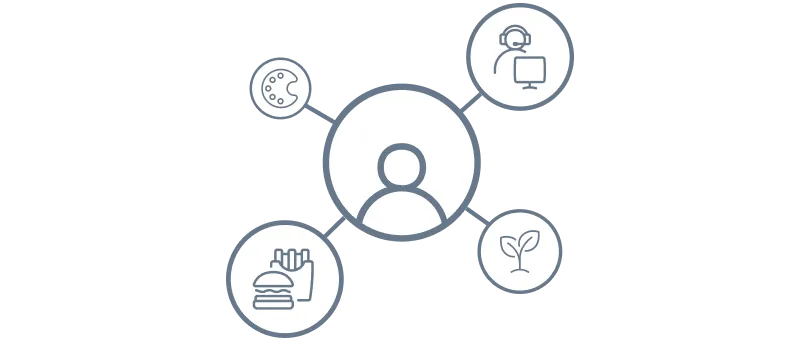Back to catalogue
Decide who you want to reach
Learn how to connect with the people most likely to be interested in your business online.

This lesson prepares you to:
- Determine the audience that you want to reach.
- Understand why it's important to define a target audience for your business.
Lucky Shrub
Lucky Shrub is a one-stop shop for garden design and maintenance. It has a nursery that offers local delivery and a website that sells plants and gardening supplies. Maria, the owner, is eager to find more customers who are replanting their home gardens. She also wants to make sure that she invests her marketing efforts and money wisely.
Disclaimer: Lucky Shrub is a fictitious business designed by Meta Creative Shop. Any similarities to content produced by real-life businesses are not intentional.

Lucky Shrub is a garden design shop and nursery.
Why define a target audience?
It's important for Lucky Shrub to reach the people most likely to become customers. To do this, Maria needs to define Lucky Shrub's target audience.
What is a target audience?
A target audience is the group of people that you want to reach with your marketing message because they may be likely to take action as a result of seeing it.
People in your target audience will share certain characteristics. These characteristics fall into three broad categories:

Demographics

Interests

Behaviours
Maria knows that Lucky Shrub customers are interested in plants and home design. They tend to spend time looking for and selecting plants for their apartments.
What are the different types of audiences?
It's possible for a company to have more than one target audience.
Start with your primary target audience to help you structure your marketing efforts, especially if you sell more than one product or service or you feel that your products or services may appeal to distinctly different groups of people. This can help you determine your secondary audience.
Defining Lucky Shrub's target audience
Using the definitions of the different types of audiences, let's define Lucky Shrub's audiences.
Primary audience
People interested in planting and maintaining their gardens.
Maria knows that a lot of people are planning or planting home gardens at the moment. Lucky Shrub's online selection of plants and gardening tools could be attractive to them.

Secondary audience 1
People who may be interested in design and maintenance services.
Maria knows that larger garden projects bring in a lot of revenue, and Lucky Shrub's maintenance services help turn people into long-term customers, so Maria also wants to attract this audience.

Secondary audience 2
People who want to spruce up their apartments with houseplants.
Maria has noticed an increased interest in houseplants among millennials, so she decides that Lucky Shrub should offer a selection of houseplants in its nursery and on its website that appeals to this audience.

Key takeaways:
- A target audience can help you to focus your marketing efforts on the people who are most likely to be interested in your business. Decide on your primary and secondary target audiences and use them to help structure your marketing efforts.
Meta Blueprint
Course catalogue
Explore fast, free, self-guided courses to help build your marketing skills across Facebook, Messenger, Instagram and WhatsApp.












 Log in to Meta for Business
Log in to Meta for Business